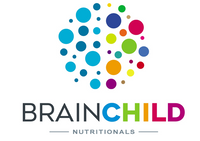STUDY LINKS SYNAESTHESIA TO AUTISM
as Seen on http://www.bbc.co.uk/news/health-25184078
Synaesthesia is A condition where people experience a mixing of the senses, such as tasting words, has been linked with autism.
Research suggests synaesthesia is nearly three times as common in adults with autism spectrum disorder than in the general population.
The two conditions may share common features such as unusual wiring of the brain, say UK scientists.
The study helps understanding of how people with autism experience life, says the National Autistic Society.
Synaesthesia is a condition where one sense automatically triggers another. Some people experience tastes when they read or hear words, some perceive numbers as shapes, others see colours when they hear music.
People with synaesthesia might say: "The letter q is dark brown," or: "The word hello tastes like coffee," for example.
Continue reading the main story
“Start Quote
People with the condition [autism] can find everyday life confusing or even frightening so research like this, which helps us to understand more about how they experience the world, is valuable”
Carol Povey National Autistic Society
Following anecdotal evidence of links between synaesthesia and Aspergers syndrome, researchers at the Autism Research Centre at Cambridge University set out to test the idea.
More than 200 study participants - 164 adults diagnosed with high-functioning autism or Aspergers syndrome, and 97 adults without autism - were asked to fill in questionnaires to measure synaesthesia and autism traits.
The study found one in five adults with autism spectrum conditions - a range of related developmental disorders, including autism and Aspergers syndrome - had synaesthesia compared with about 7% of people with no signs of the disorders.
Prof Simon Baron-Cohen, who led the research, told BBC News: "Synaesthesia involves a mixing of the senses and its a very subjective private experience, so the only way we know its happening is if you ask people to report on their experiences.
"And what this new study has done is ask people whether they experience synaesthesia, for example where a sound triggers the experience of colour or a taste triggers the experience of colour, and finding that these unusual experiences are actually much more common in autism than we previously knew."
The research, to be published in the journal Molecular Autism, suggests that while the two conditions might appear distinct, there could actually be some underlying similarities in brain connectivity.
Hyper-connectivity
Synaesthesia seems to involve unusual connections between brain areas not usually wired together, accounting for the jumbling up of the senses.
One theory about autism is that it involves over-connectivity of neurons, so that a person focuses on small details but finds it difficult to see the big picture.
Future research is needed to explore biological mechanisms behind both conditions, including carrying out detailed brain scans, says the Cambridge University team.
Carol Povey, director of the National Autistic Societys Centre for Autism, said the study could help improve our understanding of autism.
"People with the condition can find everyday life confusing or even frightening, so research like this, which helps us to understand more about how they experience the world, is valuable," she said.
"It can help us to develop more appropriate support and to make adjustments according to their needs, which is vital if people with autism are to reach their full potential.
"With the right support at the right time people with autism can live the life they choose."





